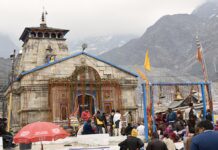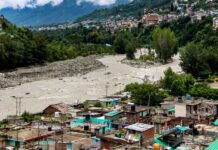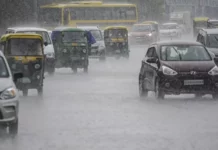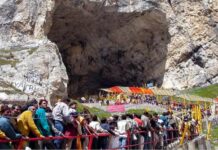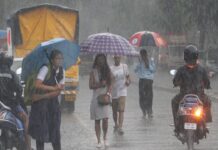 LONDON: Scientists have developed a new kind of camera that could help reduce the dangers, health risks and travel impacts of ash plumes during a volcanic eruption.
LONDON: Scientists have developed a new kind of camera that could help reduce the dangers, health risks and travel impacts of ash plumes during a volcanic eruption.
Ash can have a major impact on human lives and infrastructure, such as the 2010 eruption of the Icelandic volcano, which brought international aviation across Europe to a standstill, said researchers at The University of Manchester in the UK.
This research, published in the journal Scientific Reports, uses a new kind of camera to measure the flow and speed of ash falling out of a volcanic plume.
The researchers measure how ash particles interact with sunlight and, specifically, how they change the polarization of sunlight, in a similar way to how polarized sunglasses work.
This wouldn’t have been possible without the development of the new “AshCam” which is the first camera of its kind in the world, researchers said. During a volcanic eruption heavy ash fall can lead to building collapse, potentially injuring or killing those inside.
Exposure to ash can cause irritation to the nose, throat and eyes, as well as aggravating pre-existing health conditions such as asthma. Ash is also a major danger to other critical human infrastructure, including electrical, water and transportation networks, especially air travel – such as the Icelandic eruption.
“Volcanic ash is a primary product of an explosive volcanic eruption which generally poses a threat to human health and infrastructure,” said Professor Mike Burton from The University of Manchester.
“The Icelandic eruption in 2010 highlighted to the whole world that ash-rich volcanic eruptions can have a major impact on the global economy through air space closures designed to minimize the risk of jet engine failure due to ash clogging,” said Burton.
The team visited Santiaguito Lava Dome, part of Santa Maria volcano in Guatemala, and measured a series of explosions with the camera.
Santiaguito produces a number of these explosions every day, about one every two hours, making it the ideal place to test out new equipment, techniques and research models.
“Models of ash dispersion are key to forecasting the concentrations of ash during an eruption, which ultimately determine which air space is closed,” Burton said.
“Our research helps to measure the dynamics of ash fallout during an eruption. This gives us new insights into volcanic ash dynamics, providing an important step towards improved models of ash dispersion,” he said.
Previous studies have used ground-based ultraviolet (UV) cameras for the observation of volcanic ash or measured black carbon particles in ship emissions.
However, these methods were unable to distinguish ash from other particles in the plume, making it difficult to measure the flow of the ash.
This is where “AshCam” is different. It is made up of commercial cameras already available on the market that have been adapted with special filters that can identify ash more easily using sunlight.
“AshCam is small, lightweight and relatively cheap, making it ideal for use in volcanic environments where larger, more expensive equipment is unable to be deployed,” said Benjamin Esse, from Manchester’s School of Earth and Environmental Sciences. PTI

